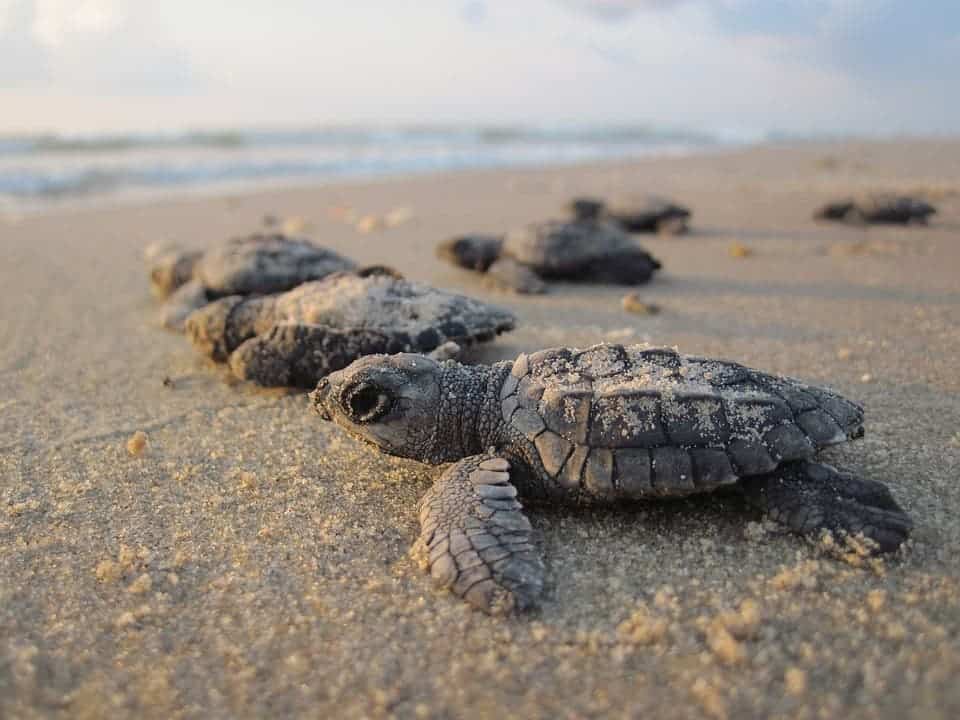The warming up of oceans and beaches is a big problem for sea turtles because their sex is determined by the temperature of sand. Higher temperatures caused by global warming means that more turtles could be female. The first comprehensive study to use endocrinology and genetics to find out the sexes of a large populations of sea turtles found that in the hottest areas virtually no male sea turtles are being produced.
Pacific green sea turtles come to a feeding ground at the north of Australia each year to eat before they go on to mate and lay eggs. They make up one of the biggest populations of sea turtles in the world. Researchers wanted to find out how many of these sea turtles were male and how many were female. They took DNA and blood samples from sea turtles and inspected the turtles’ gonads.
Shockingly, females outnumbered males 116 to 1! There was a difference over age groups also, with 86.8 percent of adult turtles, 99.8 percent of sub-adult turtles, and 99.1 percent of juvenile turtles being female. Right now there is a lag period, so the total population has not dropped so much yet. But what happens when there aren’t enough males to produce new sea turtles? The population of sea turtles could crash rapidly.

In cooler areas, like in the south near Brisbane, there were much lower female to male ratios. So this difference in sex ratios can be linked to higher temperatures. It may be good for the population if there are slightly more females than males because males mate more than once usually. However, too many females and then they have trouble finding a male to mate with.
“The pace of change affecting these populations is probably unlike anything they have experienced before,” said research biologist Camryn Allen of NOAA Fisheries’ Pacific Islands Fisheries Science Center, and a coauthor of the new research. “We know that species evolve in response to climate and other environmental changes, but they need time for that. Unfortunately in this case, that may be one thing they do not have.”
Sea turtles have a long lifespan and therefore might not be able to adapt to drastic changes in the environment so quickly. The water temperature is increasing so rapidly that it is hard for them to adapt to it. And it’s not just the temperature, rising sea levels have drowned nests and made the landscape dangerous for sea turtles. All of the species of sea turtles are vulnerable to increasing temperatures. Many other animals determine their sex by temperature such as alligators, iguanas, and fish. Researchers knew that this could pose a problem in the future but did not think that it would be such a huge problem so quickly. Hundreds of thousands of sea turtles are affected in the studied sites in Australia.
This study has been the first to look at such a large population of sea turtles and has exposed that the problem is much worse than we feared. Rising temperatures in the Great Barrier Reef are not only affecting corals by bleaching them but also making sea turtles mostly female, and perhaps unable to sustain the population. This is not a future problem caused by global warming, it is a problem right now.
Journal reference: Michael P. Jensen et al, Environmental Warming and Feminization of One of the Largest Sea Turtle Populations in the World, Current Biology (2018). DOI: 10.1016/j.cub.2017.11.057


